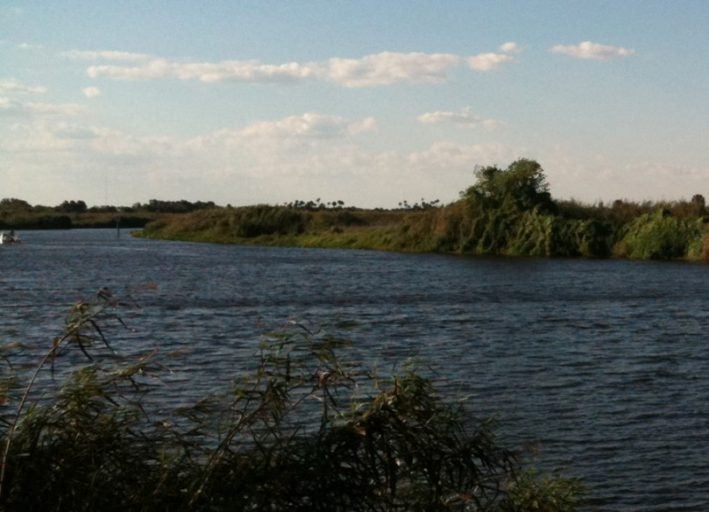Thousands of residents are expected to hold hands across seven coastal bridges throughout the region on Saturday, Sept. 28, in an effort to raise awareness about the serious threats to the health of the Indian River Lagoon.
“The goal is to raise awareness and let people know how truly important the health of our waterways is, not just to save species, but for people who want to use the waterways for fishing and recreation,” said Linda Walters, a UCF biologist who has been working to help restore oyster beds in the Mosquito Lagoon. Oysters are natural filters that help keep waterways clean and healthy for other species. “These threats are real and we all need to do our part to turn this situation around. There’s a lot at stake.”
The lagoon is a diverse, shallow-water estuary spanning 156 miles from Ponce de Leon Inlet in Volusia County to Jupiter Inlet in Palm Beach County.
According to the St. Johns River Water Management District, the Indian River Lagoon is an important commercial and recreational fishery and economic resource to the state and region. The total estimated annual economic value of the lagoon is $3.7 billion, supporting 15,000 full- and part-time jobs and providing recreational opportunities for 11 million people per year.
Walters and an estimated 900 volunteers will be holding hands across the South Causeway in New Smyrna Beach, while others do the same at the Max Brewer Causeway in Titusville, the Melbourne Causeway in Melbourne, the Wabasso Causeway in Vero Beach, the South Bridge Causeway in Fort Pierce and the Stuart Causeway in Stuart. Advocates in the Merritt Island area have decided to do a “Kayak across the Lagoon” event and will line up kayaks from one side of the lagoon to the other.
“Everyone’s help is needed to make this event a success,” Walters said.
The synchronized event runs from 9 to 10 a.m. and is the region’s National Estuary Day project. Several other activities are planned before and after the event in each location.
Walters has worked for years on the science behind re-establishing oyster beds in the Volusia County portion of the lagoon referred to as Mosquito Lagoon. She’s also working with the Brevard Zoo to inform the community and gather volunteers for oyster restoration and creating living shorelines to prevent erosion. Walters, her husband and high school biology teacher Paul Sacks, and coordinator Jody Palmer from Brevard Zoo recently were named 2013 Disney Conservation Heroes for this work and earlier this week the National Association of Zoos and Aquariums presented Brevard Zoo with the North American Conservation Award for this collaboration.
In Brevard County, the lagoon’s health has been gaining a lot of attention because it has been deteriorating for years. Government agencies and nonprofit groups are lobbying to get grant money to begin some oyster restoration work within the county with hopes it will aid the lagoon.
Walters said she’s happy to collaborate and hold hands with all the diverse groups who advocate conserving our local waterways.
That’s why the biology professor is not only holding hands and then having volunteers follow her to the Canaveral National Seashore to help make oyster shell bags for her project in the lagoon, but she’s also one of six people who will speak at the Marine Discovery Center Indian River Lagoon public forum on Sept. 26. Walters will focus on the threats to oysters and shellfish in the lagoon and what that may mean for the lagoon’s future. Others will talk about brown tide, sea grass, marine mammals and the impact of the health of the lagoon on fishing and the local economy. The program begins at 6 p.m. at the Brannon Center, 105 Riverside Drive, New Smyrna Beach.
For more information about Estuary Day activities visit www.itsyourlagoon.com or email khill@sjrwmd.com. For more information on Walters’ work in the Indian River Lagoon, click here .
